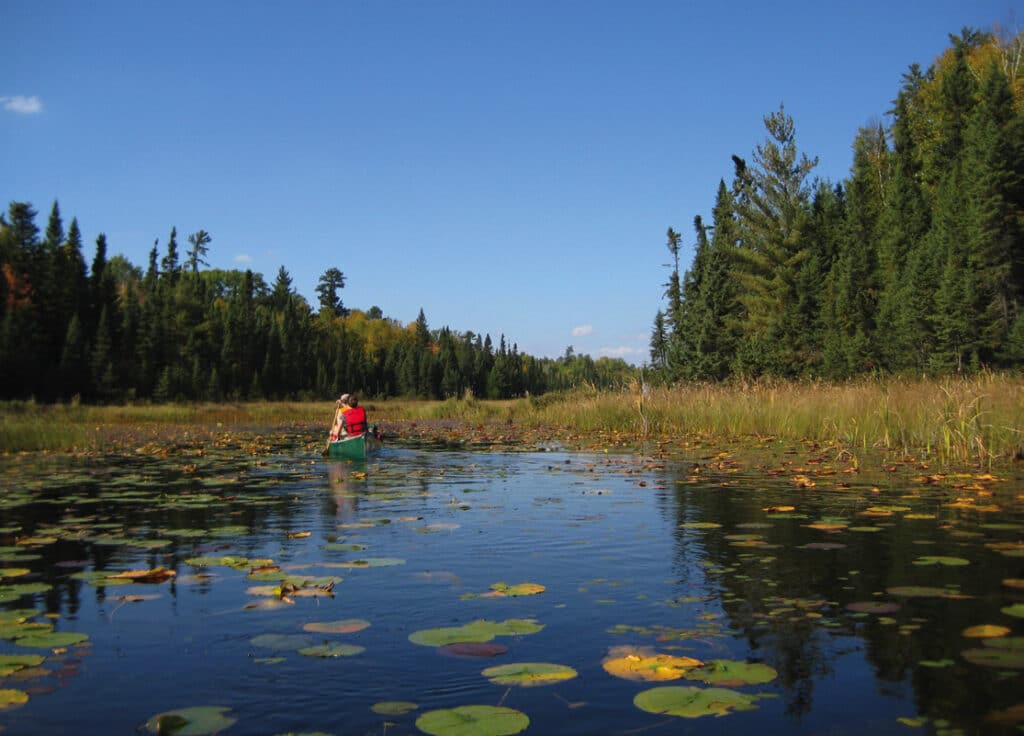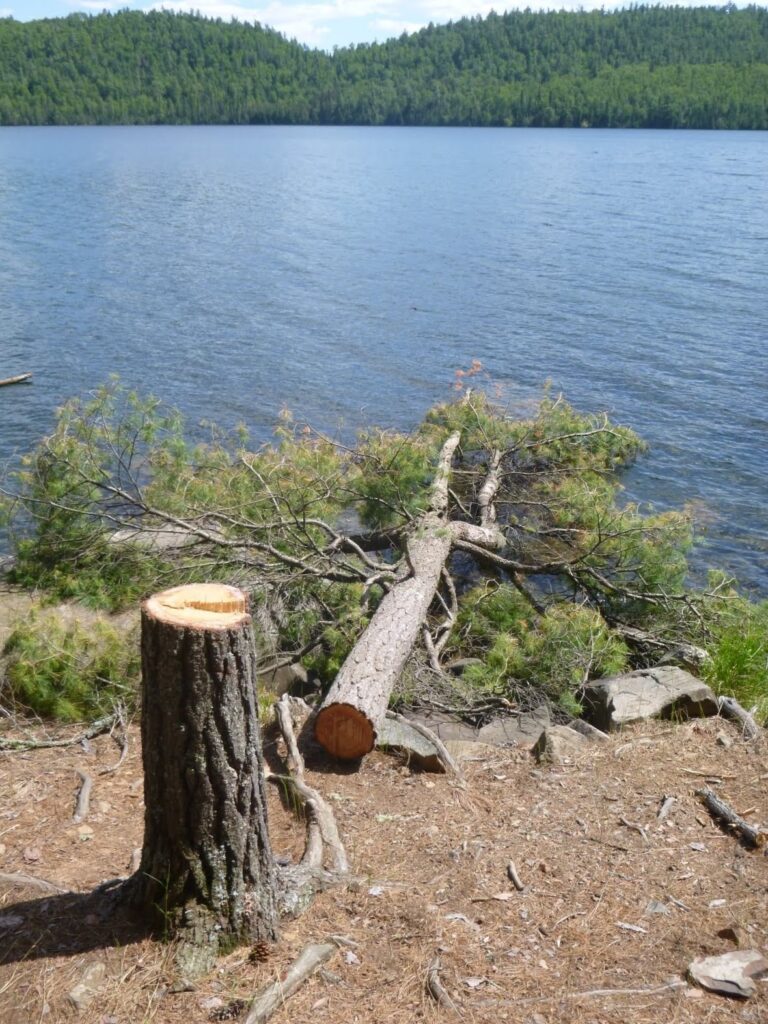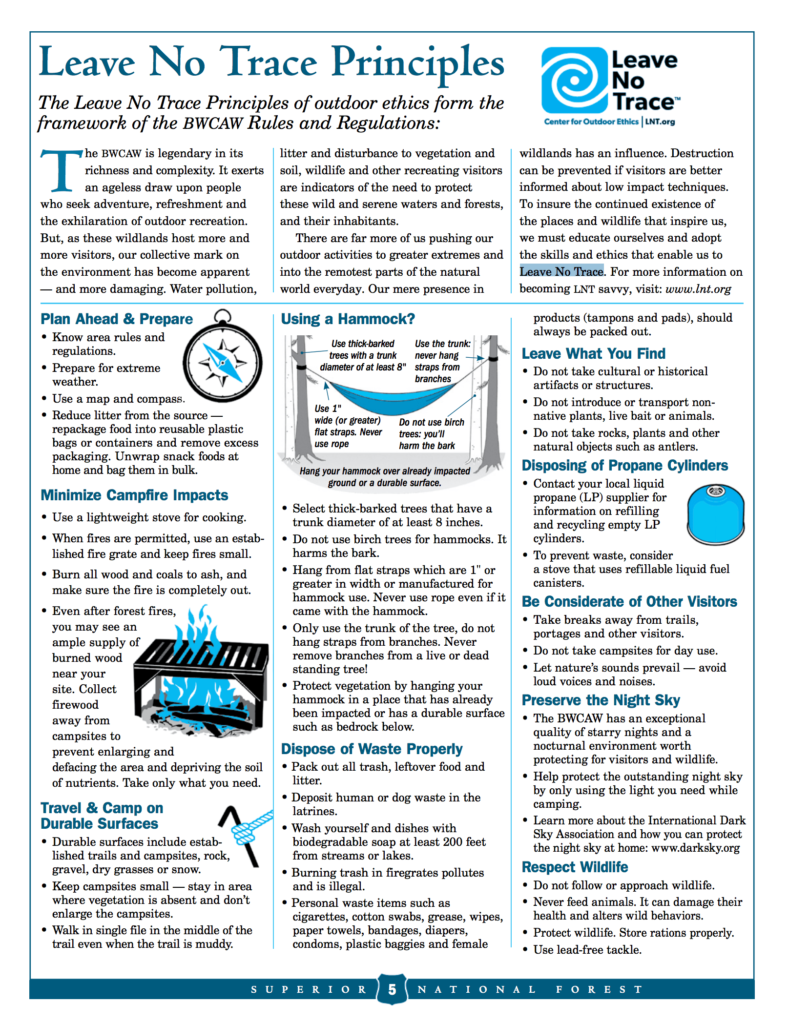
The Boundary Waters Canoe Area Wilderness has proven to be a popular getaway this summer, as other destinations are closed, summer events canceled, and travel is restricted due to COVID-19. Amongst the many visitors are people exploring the wilderness for the first time, according to Forest Service staff.
At the same time, the Superior National Forest has changed the permit issuing process to reduce risk of spreading the coronavirus. Visitors no longer need to visit a ranger station or outfitter to pick up their wilderness permit, removing a key opportunity for education on responsible recreation. They are instead asked to watch educational videos at home before printing their permit.

Ann Schwaller, Forest Program Manager for the BWCAW says: “Our wilderness crews have noticed alot of Forest visitors that are new to traveling and camping in designated wilderness. The Superior National Forest temporarily modified the BWCAW permit issuance process to prevent the spread of COVID-19 by allowing permits to be printed at home. So new visitors printing permits at home may need, but are not receiving, in-person wilderness camping education from our ranger stations or local outfitters. This may be leading to resource damage such as washing dishes or themselves in the lake with soap, cutting green trees, enlarging sites by removing vegetation, using harsh chemicals (such as foggers) for insects at the site, packing too much/too heavy for their trip causing injuries, and burning or throwing trash into the latrines. These quick actions cause long-term negative physical and social effects to the very resource they’ve come to enjoy. We ask that visitors plan ahead, and respect the wilderness and experiences of visitors that come tomorrow.”
What you can do
The Forest Service is encouraging visitors to be educated and informed about being good stewards of the wilderness. There are numerous resources to learn the regulations and plan a successful Boundary Waters trip available from the Forest Service. The BWCAW Trip Planning Guide (PDF) provides not only the rules, but also advice for safe and enjoyable wilderness experiences.
“Successful wilderness trips don’t just happen,” the document says. “They are the result of careful planning.”
Practice ‘Leave No Trace’ Principles
In recent years, the guide has been updated to include information about new issues, including the use of hammocks, preserving dark night skies, prohibition of drones, ticks, sample itineraries and other important topics.
Know before you go
Two years ago, the Superior National Forest released three new educational videos to replace the single video previously shown to visitors at permit pick-up. The first two videos in the new series are intended to be watched at home, covering topics like trip planning. The third video was intended to be shown at permit pick-up, though this year, visitors are asked to watch it at home.
“After viewing the videos, you will understand how to make a difference in the long-term health of the BWCAW by engaging in responsible recreation practices,” the Forest Service says.


